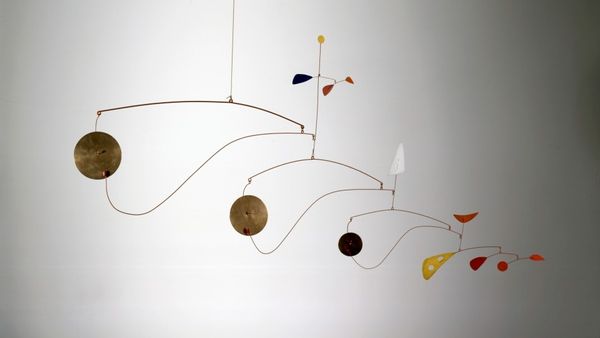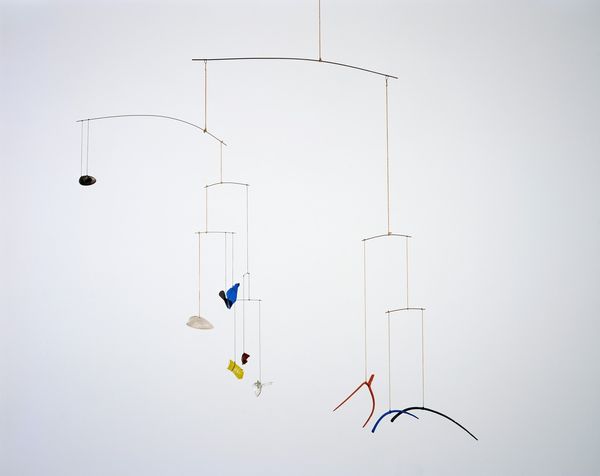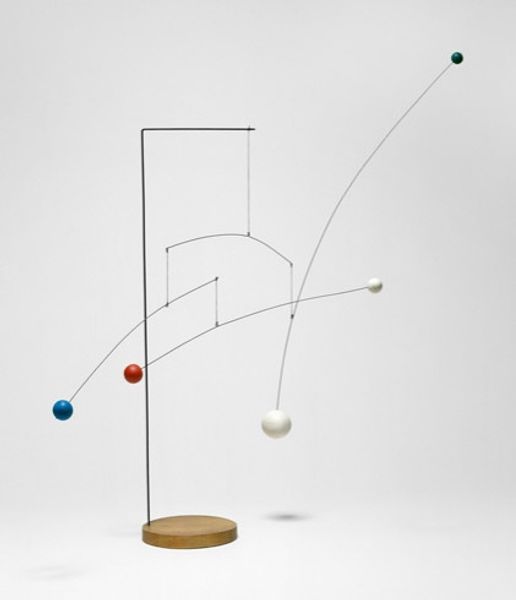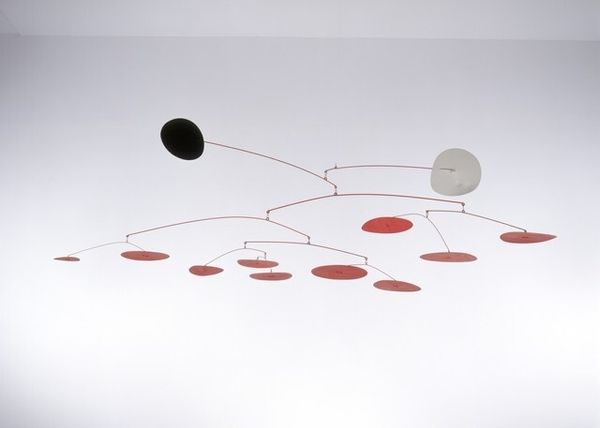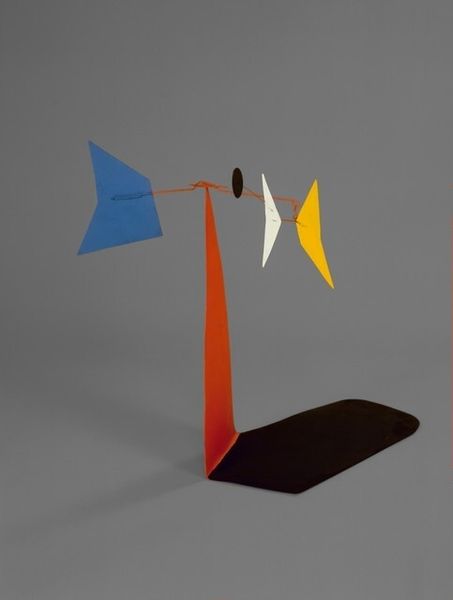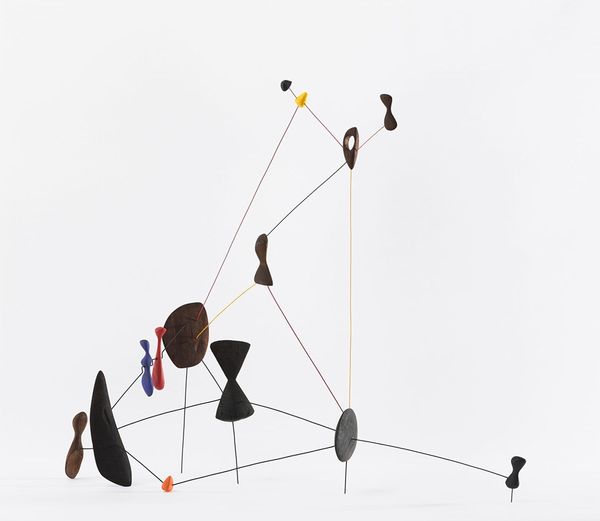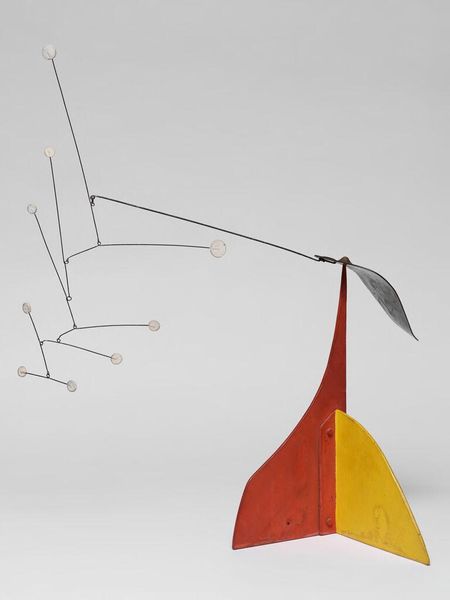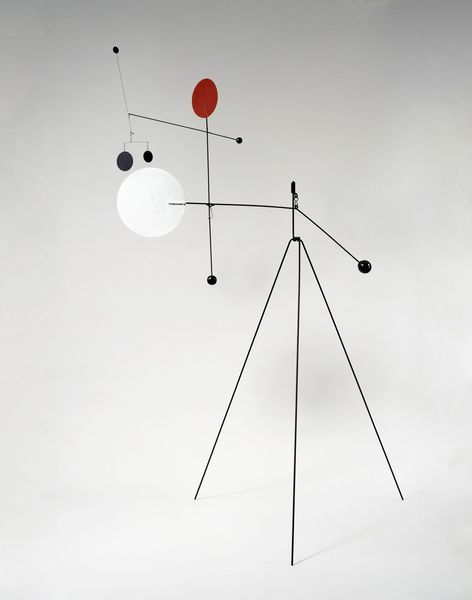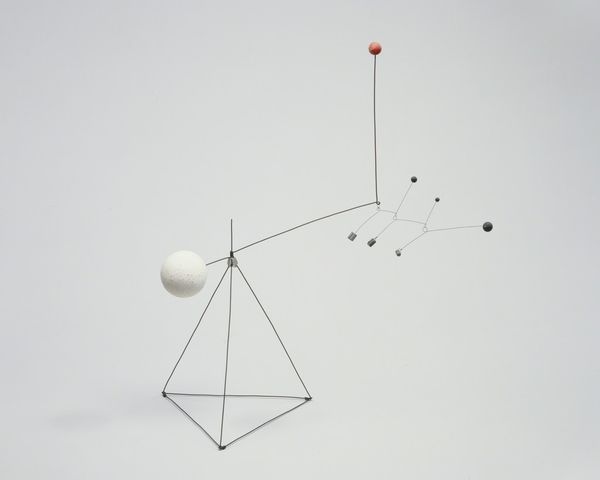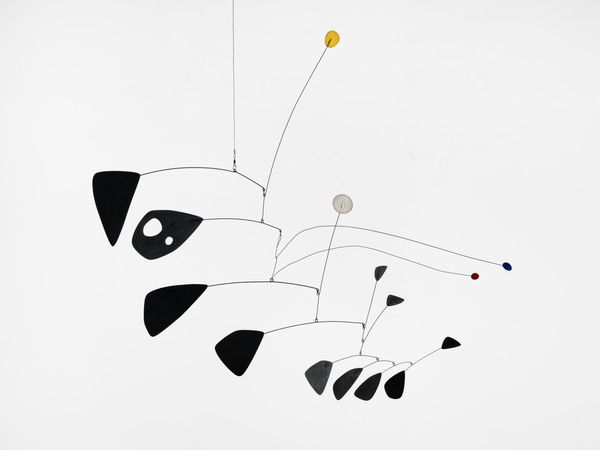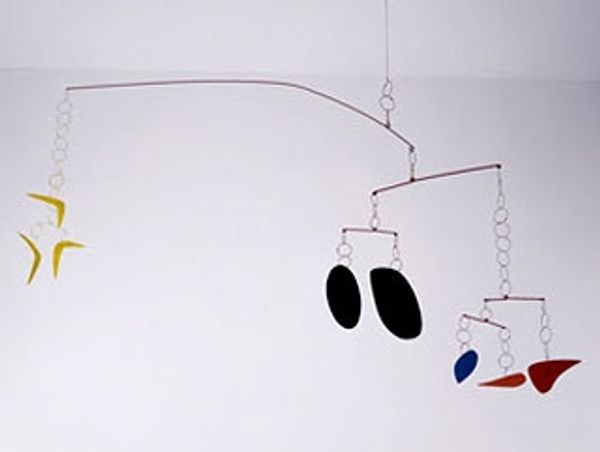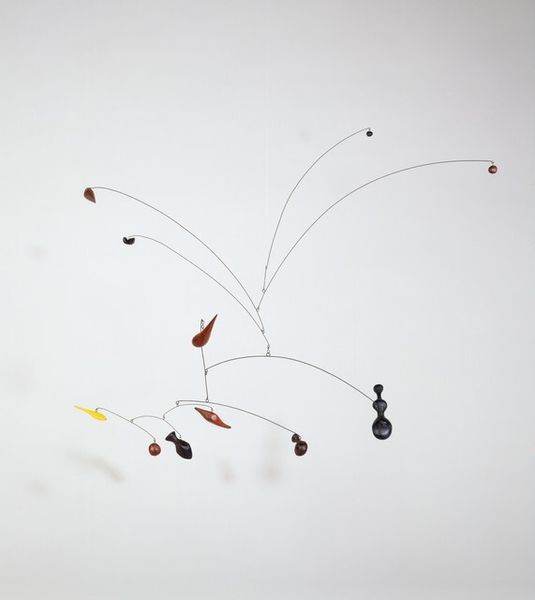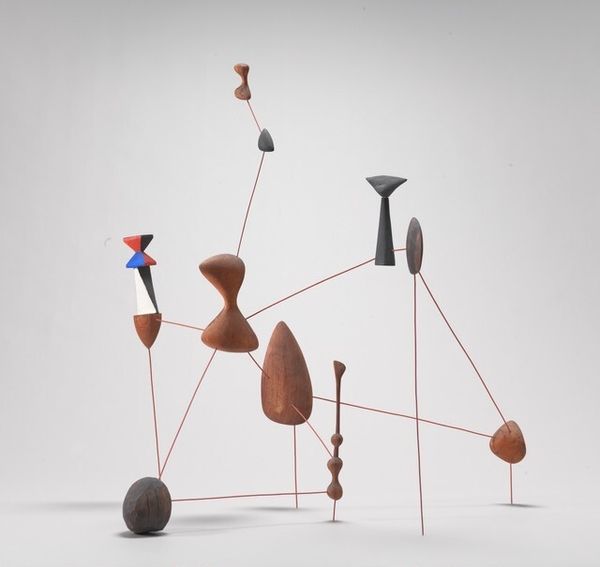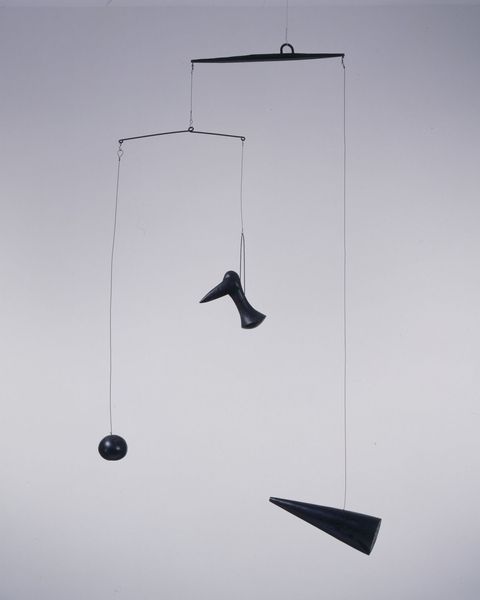
sculpture, mobile
#
art-deco
#
constructivism
#
form
#
geometric
#
sculpture
#
mobile
#
abstraction
#
line
Copyright: Alexander Calder,Fair Use
Editor: This is Alexander Calder's 'Mobile,' created in 1932. It's… well, it's a mobile! Hanging shapes, suspended in air. It strikes me as playful, almost like a constellation you can reach out and touch. It seems so simple, yet utterly captivating. What do you see in this piece, that perhaps I'm missing? Curator: Missing? Darling, you're seeing just fine. What I love is that it *is* simple, deceivingly so. It’s a dance of engineered balance. Think about the 1930s – machines were all the rage! Calder, with a wink, animates abstraction, turning geometry into poetry. A single breath, and it becomes a little universe in motion. Aren’t you tempted to give it a nudge? Editor: I am! It’s almost begging for it! I guess I hadn't thought about the machine age context so much. It's constructivist, I suppose? Curator: Absolutely! And beyond. Consider it a ballet – weights, lines, color all in this delicate interplay. See those flat planes versus the spheres? It's like he’s holding a dialogue between the 2D and the 3D, between stillness and… almost imperceptible motion. Do you see how the weight affects each part? Editor: Yes, the arrangement feels precarious in the most exciting way. A breeze could totally transform the experience! Curator: Exactly! That’s its essence – a conversation with the present moment, utterly reliant on chance, yet perfectly calibrated. A delightful contradiction, wouldn't you agree? I imagine it constantly in my living room, ever-changing. Editor: It definitely challenges how you see sculpture, breaking it free from the plinth. I think I see it with new eyes now! Curator: Precisely! So simple, yet so… boundless. And, secretly, what's more beautiful than something perfectly balanced? It reflects an ephemeral sort of dream-like harmony.
Comments
No comments
Be the first to comment and join the conversation on the ultimate creative platform.
